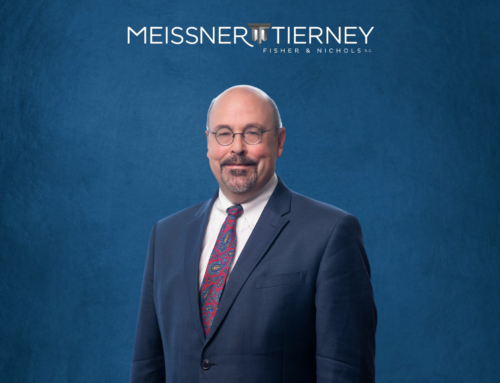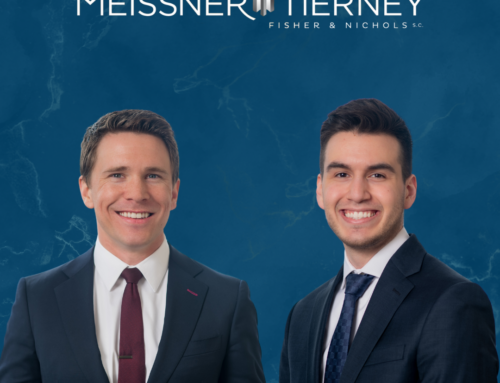2017 Wisconsin Act 368, a bill sponsored and championed by Sen. Howard Marklein, CPA, contains provisions that allow pass-through entities—including S corporations, partnerships, limited liability companies and other entities treated as partnerships under the Internal Revenue Code—to elect to be taxed at the entity level. While S corporations could take advantage of the potential tax savings afforded by the Act for their 2018 taxable years, these opportunities are newly available to partnerships for their 2019 taxable years.
Why would a pass-through entity make this election?
Because under the Tax Cuts and Jobs Act (TCJA), the deduction of state income, property and other taxes imposed at the individual level is limited to a maximum of $10,000 per return—but taxes imposed on pass-through entities are deductible at the entity level and, therefore, reduce income passed through to the shareholders or other owners, thereby effectively making those taxes deductible.1
Net savings
The economics work like this: Taxpayers subject to the top individual income tax rate of 7.65 percent in Wisconsin—applicable to taxable income over $345,271 on a joint return and $172,631 on a separate return for calendar year 2019—are likely to have property taxes and income taxes on their nonpass-through income of at least $10,000. Thus, the state income taxes that they pay on their income from pass-through entities are effectively nondeductible.
These new provisions allow pass-through entities to elect to be taxed at the entity level at a flat rate of 7.9 percent (the Wisconsin corporate income tax rate).2
You probably see where this is going. A nondeductible 7.65 percent tax costs precisely that: namely 7.65 percent. However, a federal top-bracket owner of a pass-through entity that qualifies for the new 20 percent (federal only) deduction for qualified business income under section 199A of the Internal Revenue Code is subject to a top federal rate of 29.6 percent ([1 – 20%] X 37% = 29.6%).
This means that a deductible 7.9 percent tax costs only a net 5.56 percent ([1 – 29.6%] X 7.9% = 5.56%) after you take into account the deduction for state income taxes at the entity level.
If, for whatever reason, the business owner is not entitled to the 20 percent section 199A deduction, the overall net tax cost of the 7.9 percent state income tax actually goes down to approximately 4.98 percent ([1 – 37%] X 7.9% = 4.98%).
Bottom line: Profitable Wisconsin business owners could achieve after-tax savings of approximately 2.09 percent (or almost 2.7 percent for businesses that do not qualify for the section 199A deduction).
Tax treatment
The actual tax effects of this election are specified in the Act.
As noted above, a flat tax of 7.9 percent is imposed at the entity level.3 Income, losses and deductions that would otherwise be passed through to S corporation and partnership owners are excluded for purposes of determining their taxable income at the individual level for Wisconsin.4
However, the basis in their respective ownership interests (stock in the case of S corporations and partnership interests for noncorporate entities) are still increased and decreased to reflect income or loss at the entity level, the same as they would be if no election had been made.5 And the distribution of “earnings and profits” accumulated during years in which this election is in effect would not be treated as dividends for Wisconsin (or federal) tax purposes.6
Net income and situs of income for entities making this election is computed and determined as if no election had been made.7 It is just taxed at the entity level, rather than at the owner level.8 Thus, an S corporation or partnership owned 100 percent by Wisconsin resident shareholders or partners would be taxed on 100 percent of its entire net income, even if some of that net income was apportioned or otherwise allocated out-of-state.
However, for example, an S corporation with two shareholders – a resident shareholder owning 60 percent of its stock and a nonresident shareholder owning the other 40 percent of its stock –that has 90 percent of its income apportioned or allocated out of state would pay tax only on 64 percent of its income (60% X 100% + 40% X 10% = 60% + 4% = 64%).
Since the net income of S corporations and tax partnerships electing under these new provisions will be taxed at the entity level, they are eligible to credit against that tax the net income or franchise taxes paid at the entity level in other states, as well as individual income taxes paid at the entity level on composite returns filed in other states, to the extent such credited taxes are attributable to shareholders or partners who are Wisconsin resident individuals, estates, or trusts.9
Similarly to individuals, this credit is subject to an overall cap based upon the 7.9 percent tax rate imposed on the corresponding income.10
Significantly, such income, franchise and composite taxes paid by electing S corporations or partnerships should not qualify for credit at the individual shareholder or partner level anyway, because the corresponding income will now not be reported at the individual level for Wisconsin tax purposes.11
It should also be noted that only resident individuals, estates or trusts are eligible for such credits in the first instance.
Caveats
Although the election is likely to be quite beneficial for numerous Wisconsin businesses, there are circumstances where it might not be advisable.
For example, S corporations and tax partnerships where a substantial amount of the pass-through income is subject to Wisconsin tax at substantially less than the top 7.65 percent rate might not benefit enough from the deductibility to offset the cost of having to pay tax at the higher 7.9 percent rate.
Similarly, it may not be advisable where S corporations, partnerships, or their respective shareholders and partners are eligible for credits, such as the manufacturing and agriculture credit, which reduce their effective Wisconsin tax rate.13
The only credits allowed to S corporations and partnerships electing under these new provisions are the credits for franchise, income and composite taxes described above.14
Also, S corporations and partnerships with substantial out-of-state owners might not benefit if those owners are not allowed a corresponding exclusion or credit at the individual level in their home state for the income tax that is now being paid at the entity level here in Wisconsin.
The election may not typically be advisable for S corporations and partnerships that are experiencing losses because there would be no deductible state taxes to begin with, and such losses would effectively be wasted.15
However, as explained below, this election may be made on or before the due date or extended due date of the relevant S corporation or partnership return.16 Thus, taxpayers and their accountants will have the opportunity to determine whether the election is beneficial and worth the extra compliance costs before committing to this regime. Taxpayers can even revoke the election within this same time frame if they subsequently change their mind.17
Election
The election procedure itself mirrors the existing election for S corporations to opt out of “tax-option” status entirely for Wisconsin purposes only.18 However, it must be made each year and will presumably be in some form of check-off or attachment on the Wisconsin return.
Just as with the existing Wis. Stat. section 71.365(4)(a) “opt out” election, this new election will also require the consent of persons owning more than 50 percent of the shares for an S corporation and more than 50 percent of the capital and profits for a tax partnership, though any such consent should be able to cover some or all future years.
Summary
The election was available for S corporations starting with taxable years beginning on or after Jan. 1, 2018, and is newly available to partnerships for taxable years beginning on or after Jan. 1, 2019.19 Thus, it may be appropriate for tax return preparers and other tax advisors to do some tax planning for S corporations and partnerships prior to finalizing such entities’ 2020 Wisconsin income tax returns.
Thomas J. Nichols, JD, CPA, Marquette 1979, is a shareholder with Meissner Tierney Fisher & Nichols S.C., Milwaukee, where he focuses his practice on business and tax law.
James W. DeCleene, JD, Marquette 2015, is an attorney with Meissner Tierney Fisher & Nichols S.C. He also focuses his practice on business and tax law.
Endnotes
1 I.R.C. §164(b)(6); H.R. Rep. No. 115-466, at 260 n.172 (2017) (Conf. Rep.) (“[T]axes imposed at the entity level, such as a business tax imposed on pass-through entities, that are reflected in a partner’s or S corporation shareholder’s distributive or pro-rata share of income or loss on a Schedule K-1 (or similar form), will continue to reduce such partner’s or shareholder’s distributive or pro-rata share of income as under present law.”).
2 Wis. Stat. §§ 71.365(4m)(a), 71.21(6)(a).
3 Wis. Stat. §§ 71.365(4m)(a), 71.21(6)(a).
4 Wis. Stat. §§ 71.05(10)(dm), 71.36(1), 71.365(4m)(b), 71.21(6)(b).
5 Wis. Stat. §§ 71.365(1)(a), 71.21(6)(d)4.
6 Wis. Stat. § 71.05(6)(a)14.
7 Wis. Stat. §§ 71.365(4m)(d)1., 71.21(6)(d)1.
8 Wis. Stat. §§ 71.365(4m)(b), 71.21(6)(b).
9 Wis. Stat. § 71.07(7)(b)3.
10 Wis. Stat. § 71.07(7)(c).
11 Wis. Stat. § 71.07(7)(b)1.
12 Id.
13 See, e.g., Wis. Stat. § 71.07(5n).
14 Wis. Stat. § 71.07(7)(b)3.
15 Wis. Stat. §§ 71.05(10)(dm), 71.365(4m)(b), (d)3., 71.21(6)(b), (d)2.
16 Wis. Stat. §§ 71.365(4m)(a), 71.21(6)(a).
17 Wis. Stat. §§ 71.365(4m)(c), 71.21(6)(c).
18 Compare Wis. Stat. section 71.365(4)(a), with Wis. Stat. sections 71.365(4m)(a) and 71.21(6)(a).
19 2017 Wisconsin Act 368 § 21(1).






